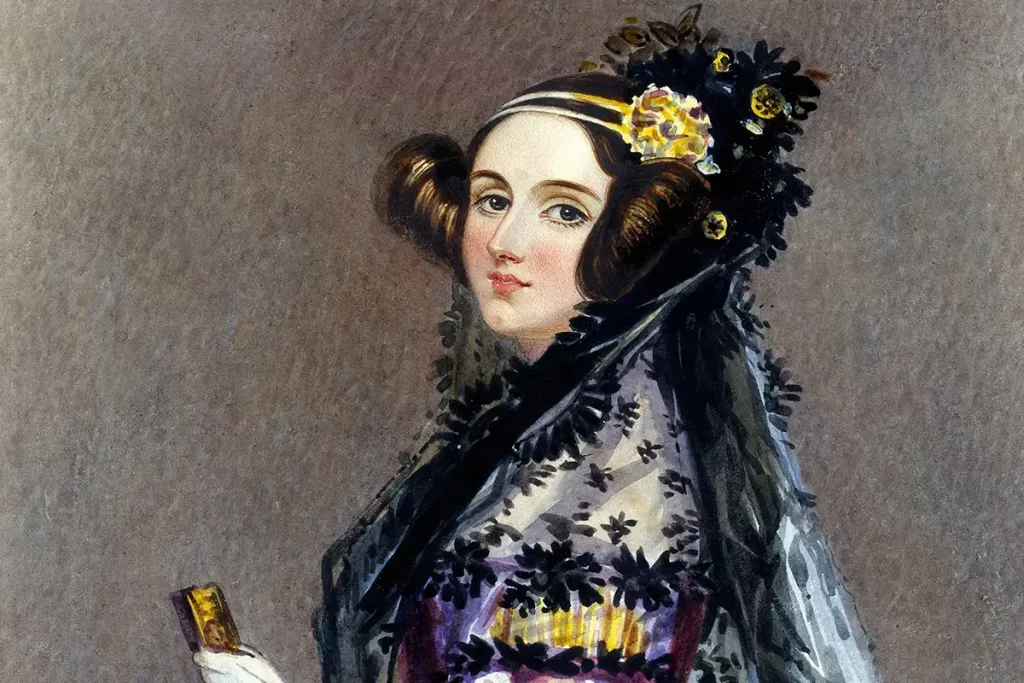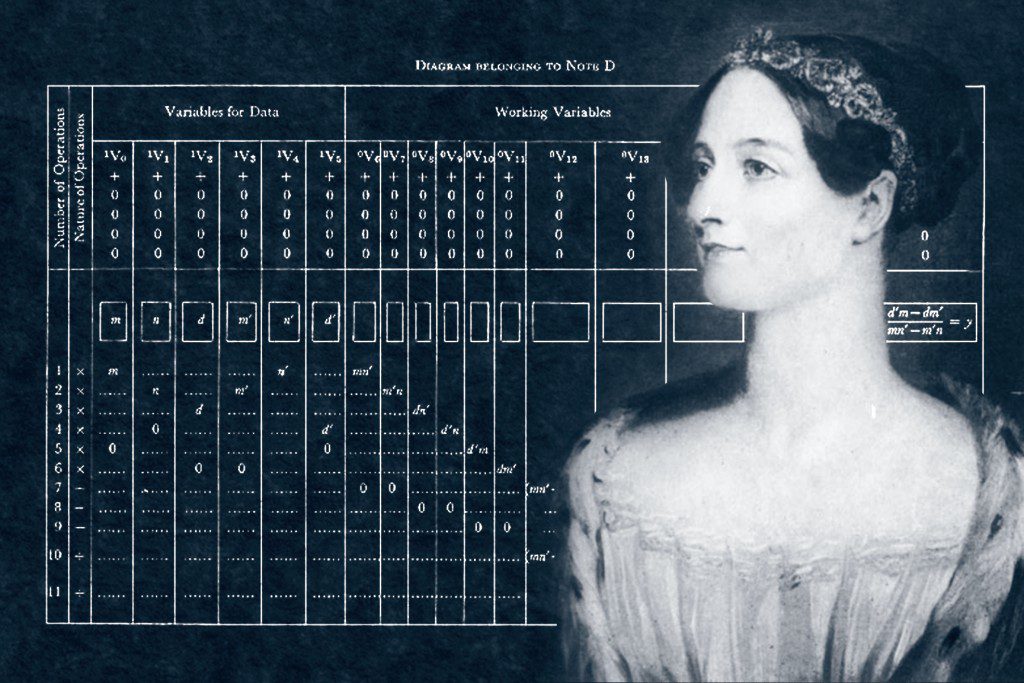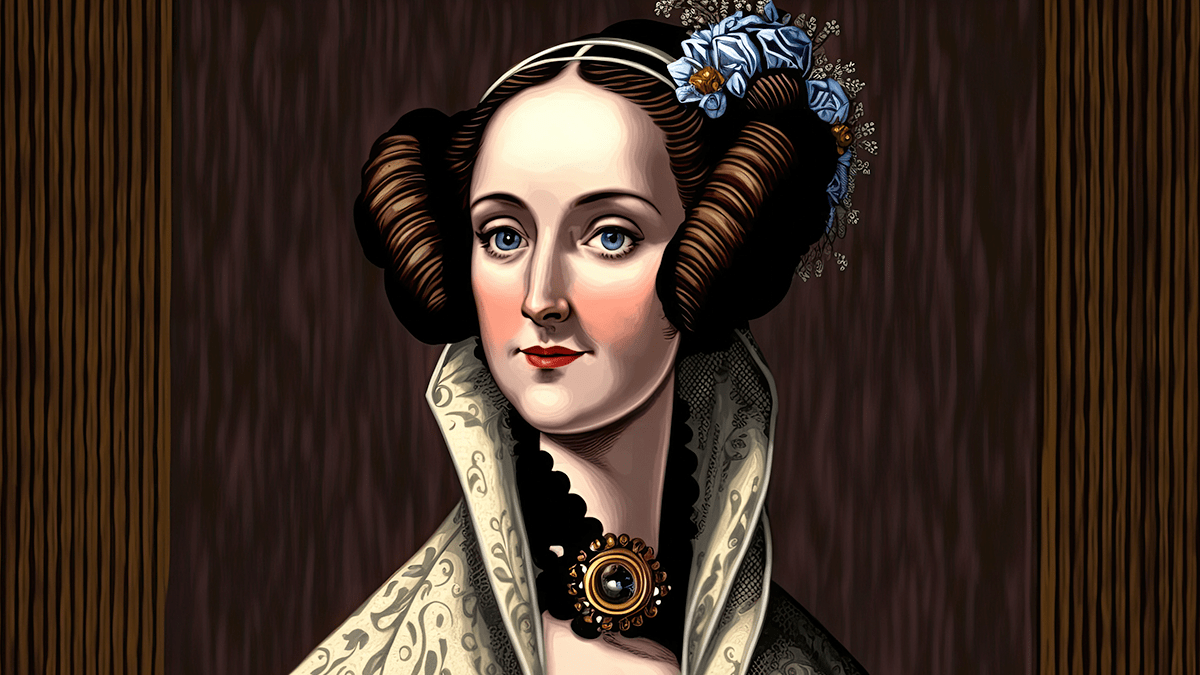Ada Lovelace is an English Mathematician and writer, often regarded as the world’s first computer programmer. She is popularly known for her work on Charles Babbage’s Analytical Engine. Lovelace was the first to recognize that the proposed mechanical general-purpose computer had applications beyond pure calculation. Her pioneering work laid the foundation for modern computer programming, and her contributions continue to be celebrated in science and technology.
Biography
Ada Lovelace born Ada Byron was born 10 December 1815 to poet Lord Byron and reformer Lady Byron. Lovelace’s childhood was marked by emotional turmoil and illness. Her father, left the family a month after she was born, leaving her upbringing to her mother, Lady Byron, a mathematician. Her mother encouraged her daughter to focus on math and science and discouraged literature and poetry, realms that she associated with her husband.
At the age of seventeen, Lovelace mathematical abilities began to emerge, and her interest in mathematics dominated the majority of her adult life. She was privately educated in mathematics and science by William Frend, William King, and Mary Somerville, the noted 19th-century researcher and scientific author.
Lovelace often questioned basic assumptions through integrating poetry and science. She believed that intuition and imagination were critical to effectively applying mathematical and scientific concepts. She valued metaphysics as much as mathematics, viewing both as tools for exploring “the unseen worlds around us”.
Contribution to programming
Ada Lovelace first met Charles Babbage in June 1833, through their mutual friend Mary Somerville. Babbage invited Lovelace to see the prototype for his difference engine. She became fascinated with the machine and used her relationship with Somerville to visit Babbage as often as she could. Babbage was impressed by Lovelace’s intellect and analytic skills
In 1837, Babbage proposed a general-purpose computer that he called the Analytical Engine. The machine would hold 1,000 numbers, each with 40 decimal digits, and be able to perform basic arithmetic as well as square roots and comparisons. Formulas would be fed to the machine through punched cards; the machine would spit out calculations through a printer, curve plotter and bell.
Between 1842–43, Lovelace translated the Italian mathematician Luigi Menabrea’s article on Babbage’s newest proposed machine, the Analytical Engine. With the article, she appended a set of notes, explaining how the Analytical Engine differed from the original Difference Engine. Her work was well received at the time.
Ada Lovelace’s notes were labelled alphabetically from A to G. In Note G, she describes an algorithm for the Analytical Engine to compute Bernoulli numbers. It is considered to be the first published algorithm ever specifically tailored for implementation on a computer. The engine was never completed and so her program was never tested.
Note G also contains Lovelace’s dismissal of artificial intelligence. She wrote that “The Analytical Engine has no pretensions whatever to originate anything. It can do whatever we know how to order it to perform. It can follow analysis; but it has no power of anticipating any analytical relations or truths.”
Based on this work, Lovelace is now considered by many to be the first computer programmer and her method has been called the world’s first computer program
Death and Legacy
Lovelace died at the age of 36 on 27 November 1852, from uterine cancer, the illness had lasted several months. She was buried, at her request, next to her father at the Church of St. Mary Magdalene in Hucknall, Nottinghamshire.
The computer language Ada, created on behalf of the United States Department of Defense, was named after Lovelace. The reference manual for the language was approved on 10 December 1980 and the Department of Defense Military Standard for the language, MIL-STD-1815, was given the number of the year of her birth.
In 1981, the Association for Women in Computing inaugurated its Ada Lovelace Award. As of 1998, the British Computer Society (BCS) has awarded the Lovelace Medal, and in 2008 initiated an annual competition for women students. BCSWomen sponsors the Lovelace Colloquium, an annual conference for women undergraduates.
In March 2022, a statue of Ada Lovelace was installed at the site of the former Ergon House in the City of Westminster, London, honoring its scientific history. The sculpture was unveiled on International Women’s Day, 2022. In July 2023, The UK’s Royal Mint issued four commemorative £2 coins in various metals to “honour the innovative contributions of computer science visionary Ada Lovelace and her legacy as a female trailblazer.”
Read More:
- Hattie McDaniel: The First Black Person To Win An Oscar
- Marie Curie: The First Woman To Win A Nobel Prize
- Mariam Makeba: The First African to Win a Grammy




